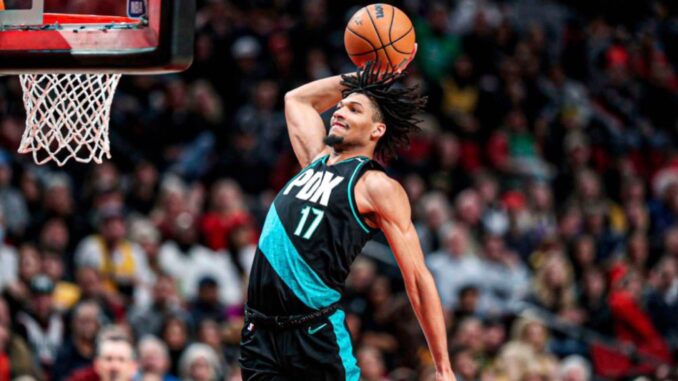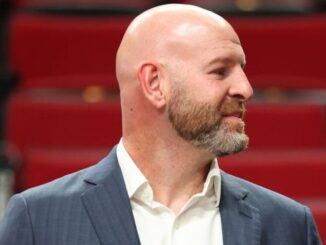
There’s reason for optimism as the Portland Trail Blazers continue their transition into the post-Damian Lillard era. Despite a challenging season that saw them finish with the worst record in the Western Conference at 21-61, the Blazers are well-positioned to rebuild their roster. With two lottery picks in this year’s NBA Draft (No. 7 and No. 14) and the potential for established veterans to be traded for younger assets, the team’s future is promising. However, the most crucial piece of this rebuilding puzzle is already on the roster—Shaedon Sharpe. Sharpe is now entering his third year in the NBA, and all signs point to a breakout campaign.
Signs Point To A Breakout For Sharpe
The Blazers guard had a solid finish to his rookie year, taking advantage of an increased role. After Lillard was shut down for the season, Sharpe had an extremely successful stretch in April, averaging 22.8 points, 6.3 rebounds, and 5.0 assists per game. Many expected him to continue that level of productivity into his sophomore season, but it didn’t come to fruition. Sharpe was limited to 32 games after undergoing surgery for a core muscle injury. When Sharpe did play, he was impactful, averaging 15.9 points, 5.0 rebounds, 2.9 assists, and 0.9 steals per game. Still, his 2022-23 end-of-season run seems closer to what you could expect for Sharpe if he can tap into his potential for a full season next year.
Aspects Of Sharpe’s Game To Improve
Sharpe’s strengths currently revolve around his athleticism, shot creation, and slashing ability. It would be great to see him take that leap as a consistent playmaker. Becoming a better facilitator will take pressure off the other Blazers’ young players, most notably point guard Scoot Henderson.
Another area of his game that needs improvement to make a significant leap is his efficiency; the Blazers guard shot 40.6 percent from the field and 33.3 percent from deep this season. However, Sharpe has previously shown signs of being a capable shooter. His efficiency was much higher as a rookie, although on lower volume, shooting 47.2 percent from the field and 36 percent from the three. How much of his drop in efficiency was due to the increase in volume, and how much was injury-related? The answer to that question could be the key to Sharpe having the breakout season he’s capable of in year three.
Sharpe is a great positional rebounder due to his elite jumping ability; this also makes him a tremendous slasher and lob threat offensively. However, the next step in his development is to figure out how to utilize his athleticism on defense. Even though the sample size was limited, Sharpe was towards the bottom of the league with a defensive rating of 116 this season. The athleticism and frame are there for Sharpe to become a savvy defender; the 6-foot-6 guard possesses a 7-foot wingspan and an alleged 49-inch vertical, which, if true, would be the highest in NBA Draft combine history.
The Blazers guard is already a consistent threat to score 20-plus points a game. The next step in his development is to refine aspects of his game that impact winning outside of his scoring as an efficient playmaker and defender. If Sharpe can accomplish this in year three of his promising NBA career, then there’s a realistic path to the 21-year-old becoming the Blazers’ best player by as early as next season.




